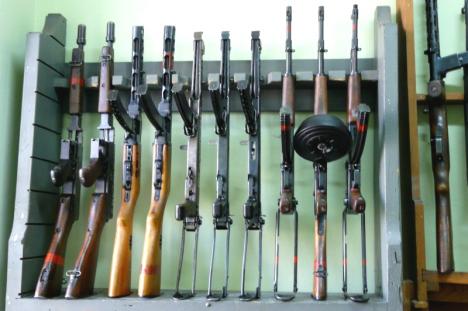Engineers from the Warsaw University of Technology Support the Polish Defence Industry
Scientists from the Department of Mechanics and Armaments Technology of the Faculty of Production Engineering work on new types of ammunition. Their achievements are renowned in Poland and stand out from international competitors.
The Department of Mechanics and Armaments Technology, founded in 2005 by merging the Department of Mechanics and the Department of Armaments Technology, continues long-term traditions of our University’s cooperation with the defence industry. Education of military technology specialists at the Warsaw University of Technology has commenced after the end of World War I and regaining independence by Poland. For years, they have been performing many works for the military. “When the army needed something, we took care of it”, says WUT Prof. Marek Radomski, PhD (Eng).
Our engineers have created, among other things, a ballistic cannon (120 mm) and the barrel autofrettage technology. They have also worked on implementing licences for the Spike anti-armour missile (they have developed the laboratory station) and prepared the UTIOS heavy machine gun that uses 12.7 mm NATO rounds for implementation.
Bullets Developed at the WUT in Polish Army?
Currently, the scientists from the WUT mostly work on sub-calibre ammo. A round of such ammunition consists of a core and a sabot. “Only the core moves towards the target”, explains Prof. Mieczysław Kaczorowski, PhD (Eng). “The sabot is there to accelerate the core in the barrel to the necessary speed, which – in some cases – reaches 1,800 m/s”.
Researchers from the Department of Mechanics and Armaments Technology have created the technology used to manufacture cores for three calibres of weapons: 23 mm, 30 mm and 35 mm. Cores are made using wolfram alloys. They are manufactured using the powder metallurgy process, which consists in creating items from metal powders without melting them. Powders are mixed into a homogeneous structure during the sintering process performed in the atmosphere which, in this case, is hydrogen. Products obtained using this method have unique mechanical properties, i.e. they can be very resistant to wear.
“Powder mix is very similar for cores of all weapon calibres”, says Olgierd Goroch, PhD (Eng). “However, cores may have different requirements concerning mechanical properties, depending on their application (anti-armour or fragmentation rounds). Thus, alloy composition and parameters of its sintering play a fundamental role in the development of a manufacturing process”.
It needs to be emphasized that the scientists from the WUT have created a process – they do not manufacture weapons or ammunition. Their solutions are implemented by MESKO, whose main objective is to provide modern and high-quality ammunition and rockets to the Polish Armed Forces, and to other entities responsible for national security. This means that the new rounds developed by the researchers from the Department of Mechanics and Armaments Technology may find their way to the Polish army soon.
Our armament specialists supervise the process of implementing their technology. “We will develop and modernize it further”, adds Prof. Kaczorowski. “Nothing is so good that it could not be better”.
Successes
Engineers from the Faculty of Production Engineering have much to be proud of. “Colleagues who have recently been at the military firing range and observed the ammo tests have said that our cores have better properties than German and French cores”, says Prof. Kaczorowski. “We are not inferior to the best”.
Our scientists have great experience in developing manufacturing processes for bullet cores. “It began in 1990 with 125 mm ammunition”, says Dr Radomski. “We were implementing our process at the POLAM Highly Fusible Metal Plant, which specialized in the manufacture of wolfram wire for light bulbs. When POLAM collapsed, we took over the laboratory equipment and continued working at the University.
The engineers have later developed e.g. materials used by MESKO in the manufacture of fragmentation cores for the LOARA anti-aircraft gun system ammo.
New Challenges
The scientists from the Department of Mechanics and Armaments Technology are currently working on new round cores. This is because the Warsaw University of Technology is a member of the consortium participating in the competition for the development and execution of demonstrators for the technology of critical elements for the new generation of 120 mm tank ammunition. This competition is conducted by the National Centre for Research and Development under contract with the Ministry of National Defence. MESKO is the leader of the consortium, while its members – in addition to our University – include Polska Grupa Zbrojeniowa [Polish Armaments Group], the Military University of Technology and the Military Institute of Armament Technology. “After negotiations, we have arrived at the phase of developing the contract for the execution of the project”, says Prof. Kaczorowski.
It is an important project from the point of view of the country’s defence. “Strategic armament elements should be manufactured domestically”, Dr Radomski points out. “If we are ever in a crisis, we won’t have to buy ammunition from other countries. We will become self-sufficient in this regard. However, we won’t avoid one dependency – we import wolfram ore, like everyone else, from China”.
Scientists from the Faculty of Production Engineering have many science and research challenges, but they have another mission – education. Searching for enthusiasts among students and encouraging them to become armament specialists and thus continue the University’s traditions.
Agnieszka Kapela
Office for Promotion and Information









